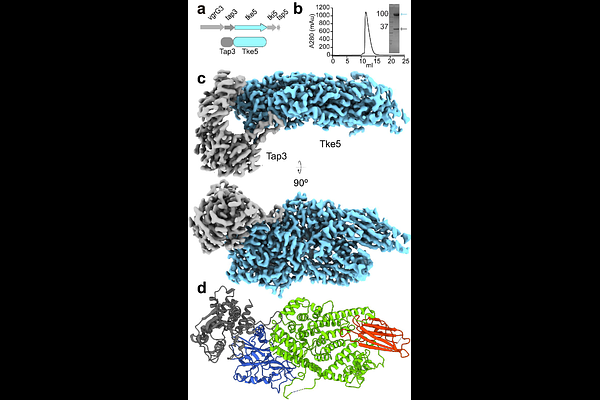The cryo-EM structure of an adaptor-effector complex reveals the mechanism of a widespread pore-forming toxin family

The cryo-EM structure of an adaptor-effector complex reveals the mechanism of a widespread pore-forming toxin family
Velazquez, C.; Zabala-Zearreta, M.; Paredes, C.; Civantos, C.; Altuna-Alvarez, J.; Bernal, P.; Albesa-Jove, D.
AbstractPseudomonas putida KT2440 is a plant-beneficial rhizobacterium that encodes multiple Type VI secretion systems (T6SS) to outcompete phytopathogens in the rhizosphere. Among its antibacterial effectors, Tke5 has been identified as a potent pore-forming toxin that disrupts ion homeostasis without causing considerable membrane damage. Tke5 belongs to the BTH_I2691 protein family and harbours an N-terminal marker for the type six secretion system effectors (MIX) motif, previously shown to be required for T6SS-dependent secretion in other systems. Many MIX-containing effectors require T6SS adaptor proteins (Tap) for secretion, but until now, the molecular mechanism for adaptor-effector binding has remained elusive. Here, we report the 2.8 A cryo-EM structure of the Tap3-Tke5 complex, providing structural and functional insight into how this effector is recruited by its cognate adaptor protein Tap3. Functional dissection shows that the a-helical region of Tke5 is sufficient to kill intoxicated bacteria, while its b-rich region likely contributes to target membrane specificity. These findings suggest a general mechanism of MIX-containing BTH_I2691 proteins for Tap recruitment and toxin activity, contributing to our fundamental understanding of a widespread yet understudied toxin family.